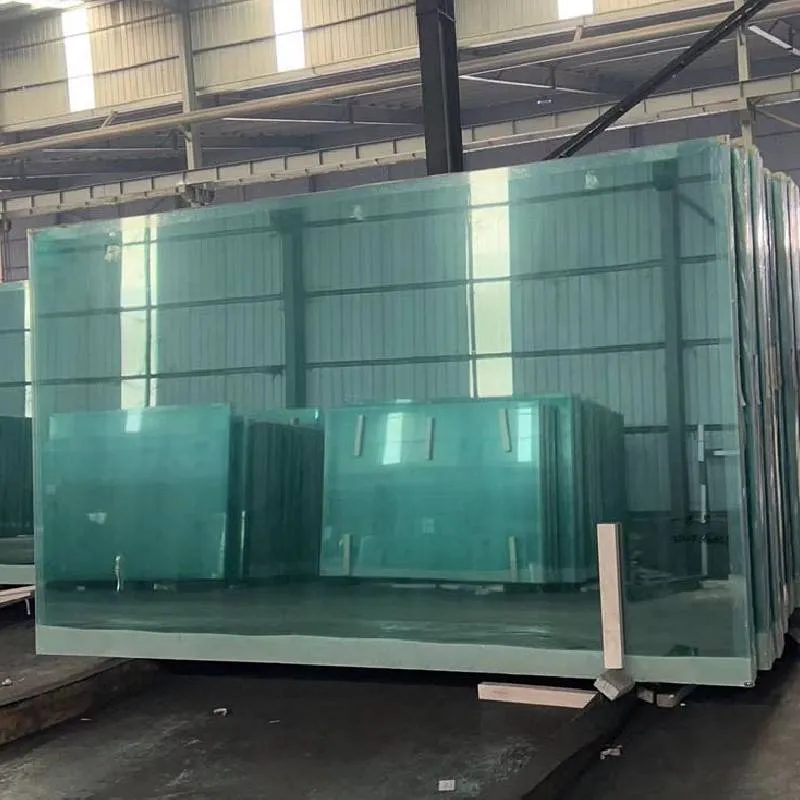Understanding Laminated and Tempered Glass A Comprehensive Overview
In the realm of modern architecture and design, glass plays a pivotal role. Two of the most commonly used types of glass that enhance both safety and aesthetics are laminated glass and tempered glass. Each type possesses unique properties, making them suitable for various applications.
Laminated Glass
Laminated glass is composed of two or more layers of glass that are bound together by a durable interlayer, usually made of polyvinyl butyral (PVB) or ethylene-vinyl acetate (EVA). This interlayer serves several critical functions. First and foremost, laminated glass is renowned for its safety features. In the event of breakage, the glass fragments adhere to the interlayer, minimizing the risk of injuries from sharp shards. This quality makes laminated glass an excellent choice for applications in high-traffic areas, such as schools and public buildings.
Another significant benefit of laminated glass is its sound insulation properties. The interlayer effectively dampens sound waves, making it ideal for urban environments where noise pollution is a concern. Additionally, laminated glass offers UV protection, blocking up to 99% of harmful ultraviolet rays. This characteristic helps to protect furnishings, artwork, and flooring from fading due to sun exposure, making it a favored option for residential and commercial spaces alike.
Tempered Glass
laminated glass tempered glass
On the other hand, tempered glass, also known as toughened glass, is produced through a process of extreme heating and rapid cooling. This thermally toughened glass is significantly stronger than standard glass, providing enhanced resistance to thermal stress and impact. When broken, tempered glass shatters into small, blunt pieces that are less likely to cause injury, a feature that aligns with modern safety standards.
The strength and durability of tempered glass make it suitable for use in a variety of situations, from shower doors to building facades. Additionally, it can withstand higher temperatures, making it ideal for applications that involve heat, such as glass doors on ovens or fireplaces. However, it's worth noting that tempered glass should not be cut or altered after it has been processed, as this would compromise its strength.
Choosing Between Laminated and Tempered Glass
When deciding between laminated and tempered glass, considerations such as safety, application, and aesthetics come into play. For environments where safety and sound insulation are priorities, laminated glass is often the preferred choice. Conversely, when strength and thermal resistance are required, tempered glass may be the better option.
In conclusion, both laminated and tempered glass have carved out indispensable niches in the glazing market. Understanding their distinct features and benefits is essential for architects, builders, and consumers alike, enabling informed decisions that enhance safety, performance, and design in various environments.
 Afrikaans
Afrikaans  Albanian
Albanian  Amharic
Amharic  Arabic
Arabic  Armenian
Armenian  Azerbaijani
Azerbaijani  Basque
Basque  Belarusian
Belarusian  Bengali
Bengali  Bosnian
Bosnian  Bulgarian
Bulgarian  Catalan
Catalan  Cebuano
Cebuano  Corsican
Corsican  Croatian
Croatian  Czech
Czech  Danish
Danish  Dutch
Dutch  English
English  Esperanto
Esperanto  Estonian
Estonian  Finnish
Finnish  French
French  Frisian
Frisian  Galician
Galician  Georgian
Georgian  German
German  Greek
Greek  Gujarati
Gujarati  Haitian Creole
Haitian Creole  hausa
hausa  hawaiian
hawaiian  Hebrew
Hebrew  Hindi
Hindi  Miao
Miao  Hungarian
Hungarian  Icelandic
Icelandic  igbo
igbo  Indonesian
Indonesian  irish
irish  Italian
Italian  Japanese
Japanese  Javanese
Javanese  Kannada
Kannada  kazakh
kazakh  Khmer
Khmer  Rwandese
Rwandese  Korean
Korean  Kurdish
Kurdish  Kyrgyz
Kyrgyz  Lao
Lao  Latin
Latin  Latvian
Latvian  Lithuanian
Lithuanian  Luxembourgish
Luxembourgish  Macedonian
Macedonian  Malgashi
Malgashi  Malay
Malay  Malayalam
Malayalam  Maltese
Maltese  Maori
Maori  Marathi
Marathi  Mongolian
Mongolian  Myanmar
Myanmar  Nepali
Nepali  Norwegian
Norwegian  Norwegian
Norwegian  Occitan
Occitan  Pashto
Pashto  Persian
Persian  Polish
Polish  Portuguese
Portuguese  Punjabi
Punjabi  Romanian
Romanian  Russian
Russian  Samoan
Samoan  Scottish Gaelic
Scottish Gaelic  Serbian
Serbian  Sesotho
Sesotho  Shona
Shona  Sindhi
Sindhi  Sinhala
Sinhala  Slovak
Slovak  Slovenian
Slovenian  Somali
Somali  Spanish
Spanish  Sundanese
Sundanese  Swahili
Swahili  Swedish
Swedish  Tagalog
Tagalog  Tajik
Tajik  Tamil
Tamil  Tatar
Tatar  Telugu
Telugu  Thai
Thai  Turkish
Turkish  Turkmen
Turkmen  Ukrainian
Ukrainian  Urdu
Urdu  Uighur
Uighur  Uzbek
Uzbek  Vietnamese
Vietnamese  Welsh
Welsh  Bantu
Bantu  Yiddish
Yiddish  Yoruba
Yoruba  Zulu
Zulu 

